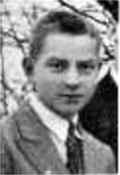 |
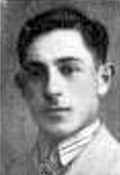 |
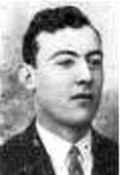 |
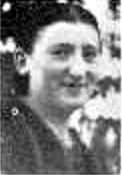 |
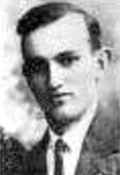 |
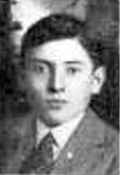 |
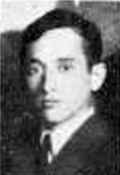 |
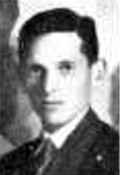 |
 |
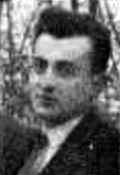 |
Second row, from right: Avieyzer Shikora, Yehude Rits, Shabsay Fridman, Yosef Drozd and Mordkhe Rits. (all murdered)
|
|
[Page 165]
by B. Kosovski, Israel
Translated by Tina Lunson
The Revisionist idea infiltrated the town first at the end of the 1920s. After being in the framework of the General Zionist Organization “Ha'tekhiya”, we created a Revisionist group named “Ha'shakhar” through the initiative of members Matisyahu Mishnayos (Uruguay), Tzedek Farba (America), Avieyzer Shikara (may God avenge his blood), Khave Burshtin (Israel), the writer of these lines, and others. That was still during the time when the three Zionist factions – “Al ha'mishmer”, “Et livnos”, and “Revizionistn” still belonged to one General Zionist umbrella organization; so we conducted our activities within it. Matisyahu Mishnayos often presented lectures in the same venue, propagandizing the ideas of Jabotinsky. The issues of Revisionism were also treated in other presentations. Within a short time, our strength and influence grew, and the writer of these lines was officially elected as secretary of the General Zionist Organization “Ha'tekhiya”. Later we even became a majority, and both the local space and the library were under our authority. For many years we had made do, for the powers that be, with the official legitimization of the Zionist Organization. We often arranged for lectures, discussions and checkers evenings and other presentations.
In about 1930 a representative from the commissioner of Betar in Warsaw came, and the Betar was founded in our town. Yehude Rits was designated as Commander and the command consisted of Khave Burshtin, Shabsay Fridman, Yosef Krulevitsh and later also Yosef Drozd and Mordkhe Rits. The head of the “HaTsaR” was Avieyzer Shikora.
By the end of 1931 the commissioner of Betar sent the instructor and Hebrew teacher Asher Gilberg to Goworowo, from Mizatsh in Volyn, who carried on the work of the commandant of Betar. During the year that Gilberg was with us the Revisionist movement grew in size and strength. He also presented frequent lectures and open multi-party discussions. He taught Hebrew, history and conducted conversations about actual issues among the members.
[Page 166]
|
|
|
|
|
|||||||||
|
|
|
|
|
|||||||||
Second row, from right: Avieyzer Shikora, Yehude Rits, Shabsay Fridman, Yosef Drozd and Mordkhe Rits. (all murdered) |
|||||||||||||
After Gilberg, Betar sent Yitskhak Mak (Ben-Dovid) from Warsaw as our instructor. He would not have any open presentations but worked exclusively within the party. He taught the Betar members marching, sports and military training. It seems as though, because of money difficulties, he could not stay with us for long, and after about half a year he left Goworowo.
During that year I returned temporarily from Warsaw where I had studied and worked and was chosen as commander. I held that office until the very outbreak of the war. Although I was more in Warsaw that in the town, the most important decisions were made with my knowledge and agreement and all current issues of the movement in Goworowo were taken care of by me personally with the authorities and the circles of command in Warsaw. In my absence the work was conducted by the lieutenant and assistants Shabsay Fridman, Yosef Krulevitsh and later, Shleyme Aplboym. In the last years Dovid Blumshteyn and later Elkhonen Kosovski, Hershl Gerlits and others were also added to the presidium.
The Betar recruited from level C, 18-year-olds who automatically belonged to the “HaTsaR”, from level B, youth from 14 to 18 years old and level A, up to 14 years. Each Shabes afternoon in the local venue there was a parade where all members were present in their uniforms; later, an “oneg shabes”; and each Friday evening a “checkers evening”. In the summer months, after the parade, we would
[Page 167]
meet outside the town, give lessons and talk over actual Zionist issues, as well as do exercises. Each year on the 11th of Oder a Trumpeldor assembly took place, with readings, declarations and so on. The Betar also published a wall-newspaper called “Tel-khay”. We had our own library. Besides the books that were given to us by the General Zionists, we had also bought new ones, and of course various party literature.
Until our entrance into the World Zionist Organization we had distributed sheklim and actively worked for the “Keren ha'yesod” and the “K.K.L.”, taken part in all the actions and undertakings and events at the head (first or second place) of the “K.K.L.” gatherings. It did not disturb us to conduct our activities for “ Keren Tel-khay”. Besides the several actions we also emptied the three-cornered, blue and white charity boxes every month, as well as organizing “flower days”.
At the end of 1932, Yosef Krulevitsh traveled for agricultural training to Ushtshilug-Lokatshe, Volyn, Ludmir Regiment. After working there for a year, he received a certificate from the “Palestine Office”. Jabotinsky was then against the individual certificates that were distributed to the Revisionists. He wanted them to be given as a Party, exactly as all the other parties did and so we ourselves would have disposal to them. Jabotinsky then issued an order (ms 60–?) that one should not accept any individual certificates. Krulevitsh had to resign from that and did not make aliye to Erets. (Today he is in America.)
|
|
In front, Beys-rim from Regiment A (from right) L. Tenenboym may God avenge his blood. Gutman, M. Fridman may God avenge his blood, A. Govortshik and Kh. Segal |
[Page 168]
Since the dealings with the certificates was a long-lasting one, we searched for various other ways to make aliye. The following from Beys-rius took the available opportunities:
Tsipora Grudka (today, Klibarski) left town in August 1932, with an excursion to the Makabi games which was organized by the engineer Zshelinski from Lodz;
Menukhe Grudka (today, Zeltser) came to the Land a few months later, also with an excursion organized by the Polish travel agency “Arbis”;
Rokhl Shapira (today, Zakharyahu) came to the Land after Sukes 1936 with the group of motorcyclists from Betar in Israel, who came to Poland with the aim of making fictitious marriages and returning with their “wives”;
Idel Skurnik left for Erets Yisroel in 1936, along with her family;
Ester Gutman (today, Kantarovitsh) also traveled illegally.
|
|
First row, from right: Shabsay Fridman and Yosef Drozd Second row, from right: Avieyzer Sandala, Yosef Krulevitsh, Yehoshe Tenenboym, Dovid Blumshteyn, Gadol Botshan and B. Kasovski Standing: Yehude Rits and the instructors Zshalandzsh and “Ben-dror” |
In about 1933, we created a Betar -like agricultural training company sub-committee, like a branch of Ruzshan. The company commander was Elieyzer Treshtshanski
[Page 169]
from Bielsk-Podlask, an intelligent young man who also conducted the cultural work and often gave lectures. The Betar members did all the hard work in order to support it. They worked with Rozen and Kosovski in the sawmill and did not even reject chopping wood. Of course, our members helped in the work and the most interested one was Shleyme Apelboym.
The flourishing existence of the company and the sympathy that it got from the Goworowo population was not lost on the Leftist parties. They did everything they could to disrupt us and to drive us out of the town. They would incite the goyim, saying the Betarim would take their work and livelihood, and that led to oppositional fistfights. Once in such an incident Apelboym was wounded, receiving a blow on the back. Then the police stepped in, who arrested several Jewish boys and prepared a trial, which had to take place in the Ostrolenke county court. The prosecutor wanted to make it a political trial – they judged it political terror, illegal activities, and so on. The Left circles threatened our members for giving witness. Shleyme Apelboym was warned in particular, and he had to leave town; he went to Bialystok and entered a yeshive. When our members saw that the judgement could end with years of prison for the Jews, they withdrew their witness testimonies, and the beaters were freed just before the trial. About six months later the company was dissolved.
Despite our conflict with the certificates with the Jewish Agency, as seen above, the agricultural training proceeded. In 1934 a special proclamation about traveling to the training colony was made through our organization. Called up from our cell were Shleyme Apelboym and Avrom Mazes, who were taken for training to Zelve (near Slonim-Volkovski), where they stayed for a year. After their return to Goworowo Apelboym, as lieutenant commander, took over the work of the cell until he would make aliye in December 1937. He went with the “Third aliye” of the “F.L.P.” In Erets Yisroel he rose to company commander in Rosh Pina, where he was very busy. After the verdict of Shleyme Ben-Yosef, Apelboym went over to Ramat Gan and became active in the ranks of the TsAL, directing very weighty assignments. Today a prominent member of “Heyrut”.
The Goworowo Ha'tsair and Betar participated in various national conferences which took place in Warsaw; and other such gatherings and meetings. Thus, the Betar cell participated in a regional gathering in Ostrov-Mazavietsk during Lag b'oymer 1932; in a gathering in the summer of that same year, in Bialystok
[Page 170]
with the participation of Yosef Klorman and others. In the summer of 1938, the cell took part in a Betar camp in Dlugashkov along with the cells from Ostrov-Mazavietsk, Ostrolenke, Vishkov and Ruzshan. We often met with the Betar members from Ruzshan in the Shtshavine forest on the summer Shabosim.
From time to time we brought in speakers from Warsaw, who presented open lectures. In most cases, we would rent large halls for these. Sometimes we sought out Dr. A. Lipman, Asher Zelig Lerman from the “Keren Tel-khay” (Asher Naur, the recently-deceased coeditor of “Yediot Akhronot”), Y.Sh. Peker, Yosef Krust, Yosef Krelman, and others. 1n 1934 we had a visit from Herr Yitskhak Gurion from Erets Yisroel – there since the Second Aliye, today a prominent leader – who came to Goworowo to visit the family of Yoel Levkovitsh.
During the 1935 plebiscite about creating new Zionist organization (N.Ts.A.), everyone voted for Jabotinsky. There was no “Brit ha'Kanaim”, the so-called “grosmanistn” , in town. Despite the small “Fascists” and “Guns and Swords” we continued to grow. The Revisionist movement reckoned among the large parties in town. In our ranks were many youths from the yeshives, and young women from the “Beys Yankev” schools, from the folks-shule and youth from every stratum of the population. During out nearly ten-year existence we struck deep roots. We were recognized for our active work by the “HaTsaR” and the ”Betar” commissioner in Warsaw. I often used my
|
|
[Page 171]
personal contacts with them. To cite our carrying out our commands and for out active work for “Keren Tel-khay”, we received a golden token to add to our banner. Especially, in 1936 we – the writer of these lines, Shleyme Apelboym, Yosef Krulevitsh and Avrom Mazes ¬– received the “Simon Ha'nedar”.
|
|
(From right): Gutman, Ester Gamora, Khone Kosovski, Sore Haravits, Hershl Gerlits, Ester Drozd, Eydl Skurnik, Brayne Grudke and Dovid Drozd |
This is, in short, the history of the Revisionist movement from its founding, its rise and activity until the destruction of the town. We have mentioned only the persons who were the leaders the whole time. But we have not forgotten all the members not named, and all the little brothers from Level A up to the older members who handed over the Revisionist movement idea and loyal Jabotinsky's ideals. The goal that they fought for, heart and soul, they were not able to realize. The Hitleristic murderers destroyed everything. Only a small part survived the gruesome war and by various ways and byways arrived in Israel. Few found their way to other lands. The largest number, though, did not avoid
[Page 172]
the bestial German-Nazi hands and shared the fate of the Six Million Jewish martyrs.
Let us stand silent for a while and remember with reverent honor all those who are no longer with us. May God take revenge for the spilling of their innocent young blood!
|
|
Above center: the “Simon Ha'nedar” |
by Y. Avi-Sore, Israel
Translated by Tina Lunson
The “Mizrakhi” organization in Goworowo was one of the first Zionist organizations in the town. The members recruited from the hasidic and maskilish [“enlightened”] circles and though they were few in number, they held a respected place in the communal and cultural life of the town.
Echoes of the intensive activity of the “Mizrakhi” soon after the First World War was evident in the reports and correspondence of Central “Mizrakhi” organ “Ha'mizrakhi” , which was published in Warsaw. In number 19 of that organ, of January 1922, it was stated that the authorities had legalized the activities of “Mizrakhi” in Goworowo and, that at a general meeting a committee had been elected, consisting of six members: Avrom Levin, chairman; Ali Grinberg, vice chairman; Y. L. Tandetshazsh (son-in-law of Mayer Romaner) secretary; Khonen Fridman, treasurer; Yisroel Leyb Kruk and Shmuel Tsudiker, administrative members. In a second correspondence there was a report about the cultural activity that the “Mizrakhi” was conducting in the town; in a new venue for the organization, they had founded a circle for studying Torah, mishnayos and Talmud; and they had created their own minyen for prayer. The visit by “Mizrakhi” representative Zalkind – a son of the Kharkov Rov - was a great success. His brilliant lectures had drawn big crowds and thanks to him, 25 new members joined the “Mizrakhi”.
A great stir was caused in town by the visit of the “Mizrakhi” political leader Rov Hager, the Rov of Sosnovets. He presented several lectures in the great shul, which was packed full of men. And the women filled the women's shul. He was hosted by our Rov in his home, and although the Rov is not a “Mizrakhi” sympathizer, he still, in honor of the Sosnovets Rov and his grandson from Vizshnits, came to shul to hear his speeches. The great ideological leader of the “Mizrakhi” also paid a visit to Goworowo; the Tshekhonov Rov Mordkhe Bronrot, who himself stemmed from Goworowo and later became the Rov of Tel-Aviv.
The “Mizrakhi” members participated in the General Zionist activities; collected money for the “Keren kayemet” and “Keren ha'yesod”, dispersed
[Page 174]
“sheklim” and actively took part in the community, economic and cultural life of the town.
|
|
may his memory be for a blessing |
The proclaimed leaders of “Mizrakhi” were: the scholar and hasid Reb Yisroel Leyb Kruk; the community activist and Enlightener Reb Elkhonen Fridman; Reb Shmuelke Tsudiker, who for many years occupied the office of delegate for “Keren kayemet” and member of the Jewish council for its last term; a fine and honest community leader, the Aleksander Hasid Reb Yisroel Mayer Mishnayos; the timer merchant Reb Shabsay Verman; Reb Sholem Plotke from the artisan activists; Reb Dan Rozenberg, also a deputy for “Keren kayemet”; and Reb Meyshe Skurnik. The latter was a brilliant speaker and colorful personality who played a large role in town's life.
In 1935 many yeshive folk who had gotten the Zionist idea after being in yeshives, enrolled in “Mizrakhi”. They entered the youth departments“He-khaluts” and “Tseirey Mizrakhi”. The leaders were Yerakhmiel Drozd, Yosef Gurka, Yosef Zilbertson and Mayer Verman.
The “Ha'shomer ha'dati” was founded in Goworowo in 1936 (in Israel it is called “B'ney Akiva”). Among the founders of “Ha'shomer ha'dati” were Yankev Kruk, Gedalye Tsudiker, Mordkhe Apelboym, Yankev Rozen, Shmuel Shmelts and others. The “Ha'shomer ha'dati” developed itself, had a significant number of members, among them many yeshive men. They conducted a multi-sided program in many areas and were recognized by the Warsaw Central.
For a long time the Goworowo “Ha'shomer ha'dati” published their own wall-newspaper with artistic drawings by their leader Yankev Kruk.
The “Mizrakhi” venue and its youth organization were located on
[Page 175]
Bankova Street at Reb Mayer Volf Tehilim's for many years, and later on Koshtshushki Street at Reb Avrom Grudka's. The venue always bristled with activity and life and various exhibits. Sometimes mass meetings were held in the “Mizrakhi” venue with the participation of dozens of personalities from around the country. I recall the mass meeting against the British Agency after the publication of the aliye decree. Dozens of speakers were presented from the Central office and “Mizrakhi” members from Goworowo, one of them from “Ha'shomer ha'dati”. The hall was packed full, and many people stood outside because of the lack of space.
There were almost no older “Mizrakhi” members left alive after the Shoah. And the majority of the young members were killed by the murderous Hitlerists in the war years.
A pity for those who are lost and are no longer with us.
|
|
|
|
JewishGen, Inc. makes no representations regarding the accuracy of
the translation. The reader may wish to refer to the original material
for verification.
JewishGen is not responsible for inaccuracies or omissions in the original work and cannot rewrite or edit the text to correct inaccuracies and/or omissions.
Our mission is to produce a translation of the original work and we cannot verify the accuracy of statements or alter facts cited.
 Goworowo, Poland
Goworowo, Poland
 Yizkor Book Project
Yizkor Book Project
 JewishGen Home Page
JewishGen Home Page
Copyright © 1999-2025 by JewishGen, Inc.
Updated 30 Jun 2024 by JH